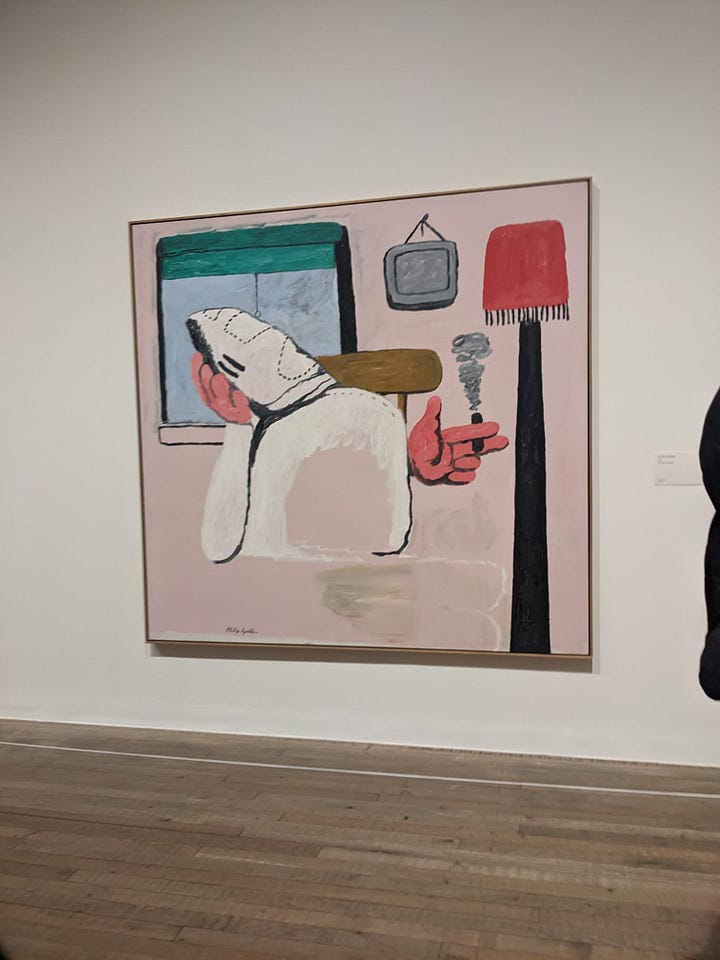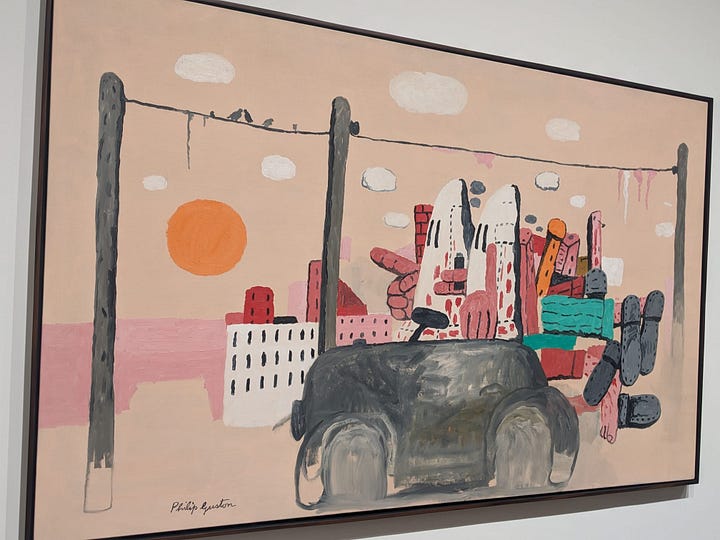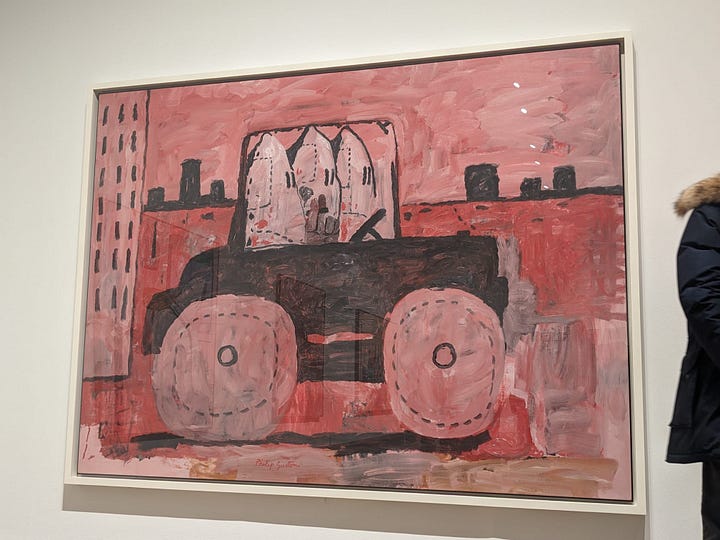A trick that never fails to tell me if I’ve been spending too much time online is when I am annoyed by everything I see.
All content, even the lives of people I know in real life, feels stupid and pointless; all the news is bad or clickbait or both (10 foods that are killing you RIGHT NOW!), and my empathy is at an all time low. I scroll and scroll, filled with self-loathing, and everytime I scroll I snap in irritation. I feel anxious for no reason that I can pinpoint. I blame my lack of sleep, worry I drink too much coffee and tell myself that maybe this is what normal feels like now. Maybe I can self-soothe with this video of a raccoon catching bubbles? Maybe I will feel healed watching an Instagram psych call out narcissists? Perhaps a skincare hack will indeed change my life?
Last week, I was telling you about something you’ve probably already felt, a vague sense that things in the world went bad at some point and then stayed that way.
For a while I wondered if that was simply a coming of age experience, disillusionment combined with professional burnout, or the result of my own traumatic experiences (witnessing domestic violence and divorce as a child, sexual assault, navigating the indian legal system as a survivor, etc).
But, as the internet loves to say, I was gaslighting myself.
The real problem was that I was trapped on my phone with three competing ideas in an endless death match:
Things have gotten bad and are progressively getting worse — an idea that produces paralyzing anxiety.
Things have always been bad and we are only just noticing — an idea that makes any response to a current crisis feel impossible and pointless.
Everything is fine and normal and the real problem is that the media can no longer be trusted and the world is full of false conspiracies — an idea that deepens isolation and mistrust.
In ye old days of newsprint, where I started my career, editorial teams and art directors spent a lot of time thinking about what kind of images of violence their readers could tolerate. A severed limb might not belong on the cover of a magazine, but it could be buried inside a photo spread about the realities of war. Another set of images that frequently accompanied terrible news, were those of a person holding a photograph or the belongings of someone who was killed. These became almost a photographic shorthand for tragedy.
The choice not to include grislier photographs or footage was sometimes to protect the dignity of victims, sometimes because news desks wanted to protect readers, and always to sell magazines. So the challenge was to invoke the right degree of emotion without alienating the reader, give you something you could skim over and still keep your breakfast down.
In the nightmare of the now that plays out on our phones each time we scroll, ads-in-disguise (because almost everything on Instagram is now an ad) are interspersed with images of real suffering: starving human beings, babies buried under rubble, and bombed out buildings.
You should see this, the people in these pictures say, because we do not deserve what is happening to us, and maybe witnessing this horror will force you to act.
The terrifying and graphic images of death and mutilation, the headlines that stoke anxiety, the pleas for help. It is impossible to hold it all at once. And so, we keep scrolling from what experts call empathy fatigue. In the way gradual exposure to something we are traumatized by can help us overcome those fears, over-exposure to a negative stimulus can cause empathy burnout. Feeling the full force of grief, anger and sadness at everything we see in the world would cause an emotional meltdown. Nine times out of ten, we stay numb out of self-preservation.
I experienced a version of this while reporting on stories of sexual violence both before and after the MeToo movement. As more women began to break their silence about being abused, the bar for showing they were harmed grew higher and higher. It was common for stories to simply not make the cut unless they met certain parameters: Were the abuser or the victim famous? If the abuser was unknown, did they harm a lot of people? Was the violence extreme? As the bar got higher, people’s ability to empathize diminished, particularly towards those who suffered less brutal violence, or those who belonged to different races, classes or castes. Responses like — the MeToo movement has gone too far, or that xyz was “no Harvey Weinstein” and so their behavior was somehow excusable — became normalized. Through it all, I went numb in order to stay sane, until I couldn’t pretend I was unaffected anymore.
In the long nightmare of the now, I try to ward off hopelessness and fear by avoiding political doublespeak on how all of this death and suffering was inevitable. I ask myself what that nagging anxious feeling is, how can I stay human when I would rather look away. The answer, I’ve come to find, is acknowledging my grief. Grief is the opposite of empathy burnout because it nudges me to accept that I’m connected to the rest of humanity, and that global catastrophes and geopolitics can affect my mental health much like personal tragedy. Because some days, grief feels like the only way to honour the death of an unknown stranger in a faraway land I have never visited.
Inspiring
Last month I had the great fortune of seeing Philip Guston’s work at the Tate Modern. It was the last week of the exhibit, and I went to see it with my friend, the terrific artist, Janine Shroff. It was gratifying and depressing to learn that Guston also struggled with self-loathing as he read news of war, and then went to his studio to paint. However, I drew hope from the fact that Guston did not lose himself in self-pity. He had a history of working with the NAACP and making art about abominable race politics in America. His series of paintings of the Ku Klux Klan were among my favourites — Guston painted the racists in their ghoulish and ridiculous robes, performing banal acts and driving around the city. It made me think about the value of turning the lens on the absurdity of the oppressor instead of making gratuitous images about the suffering of the oppressed.
Philip Guston: the restless artist painting everyday evil | Tate




Surprising
Fruit flies and zebra fish do it, and so must we — forgetting, that is. Forgetting is a crucial part of the evolution and survival of species, it is how we discard distractions, move on from trauma and build a sense of self.
Moving
Since we briefly touched on the subject of self-soothing animal videos, this is among my most-watched documentaries since I was first introduced to it by two young girls over Christmas. They settled down to watch it with me and their mum, and I can safely say that it made our whole day. Animal communicator Anna Breytenbach speaks with a leopard whose soul is in torment, compliments him and brings him his new name.
The incredible story of how leopard Diabolo became Spirit - Anna Breytenbach, "animal communicator".
Hopeful
A five minute video on how empathy can change the world.






Wow the animal communicator video is just 🤯😭